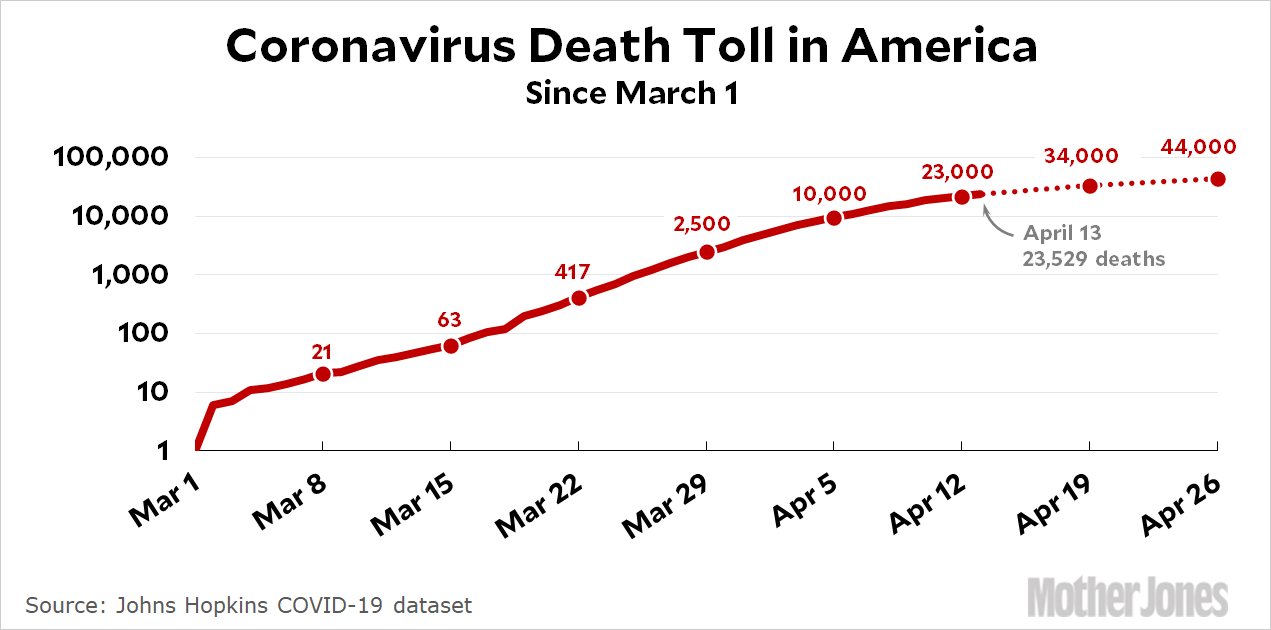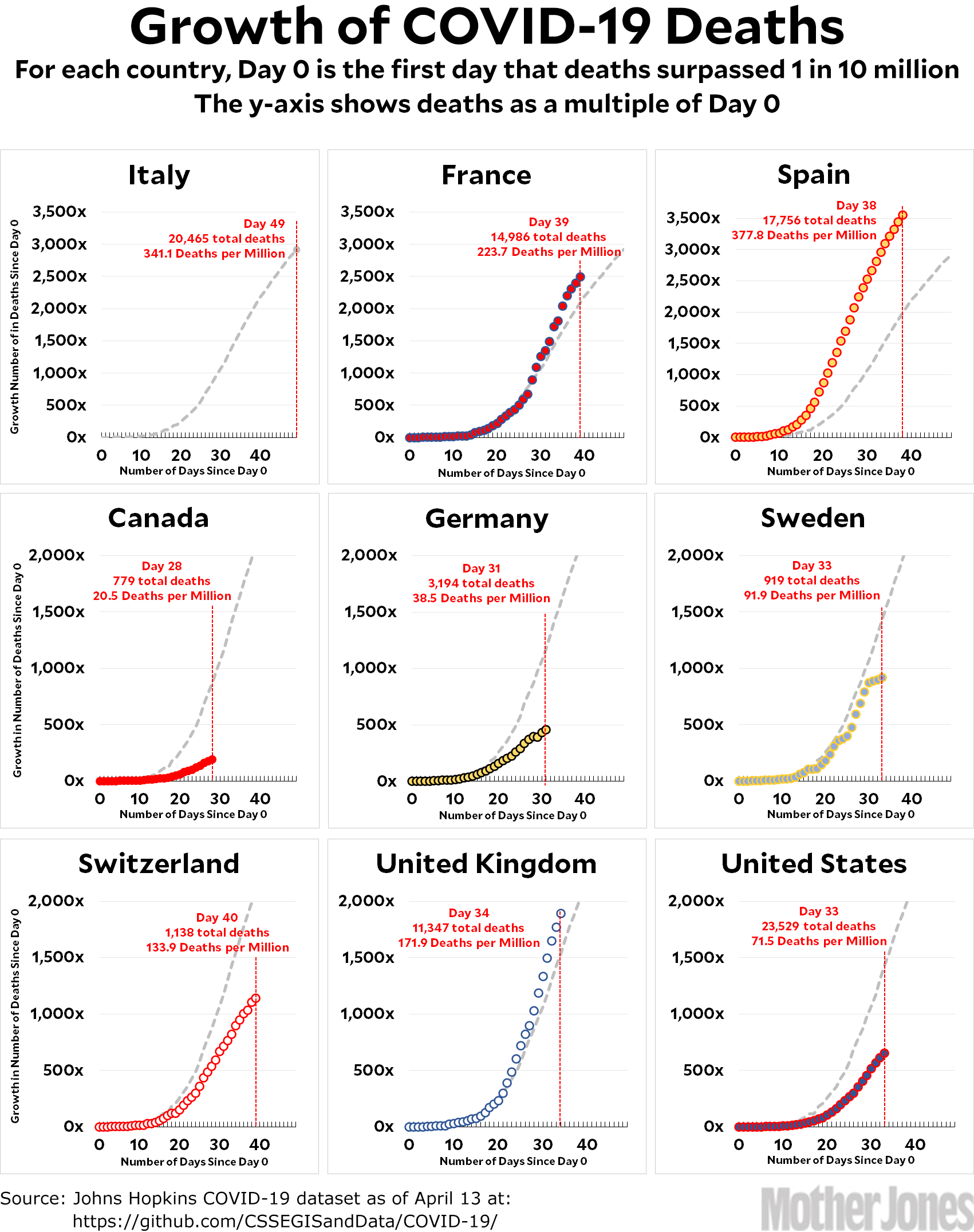Here’s the coronavirus growth rate through April 13. It really looks like nearly every country has either peaked or is very close to peaking.
So let’s take another close look at the United States. As always, IANAE and there’s nothing sophisticated about my projections. However, they’re also completely transparent. It’s easy to see what I’m doing and decide if you feel like taking it seriously. First off, here’s the growth rate of the daily death toll (smoothed using a 6-day rolling average):

The daily death toll has been declining for several days now, so even a rolling average shows a net drop in daily deaths. The trendline is once again pointing toward tomorrow as the likely peak. Now here’s the cumulative death toll, with projections based on the growth rates in the chart above:

This trendline just keeps going down. The daily growth rate has been consistently lower than projected for the past couple of weeks, and now suggests about 25,000 total deaths at peak. That means somewhere in the ballpark of 50-60,000 deaths through summer. Here’s what that looks like with a normal curve superimposed:

Needless to say, you should feel free to double or triple this number if you think COVID-19 deaths have been way undercounted. However, the undercounting probably hasn’t changed much over time, so it doesn’t have a significant effect on relative death rates. Thus, the projections of peaks and declines should be fairly reliable regardless.
OK then. Let’s change the subject slightly. Earlier today I mentioned a few anomalies about the COVID-19 death tolls. I could have added some others too. This plus a few other things has put a thought in my head that’s been rolling around for several days—a thought that I’m afraid to state publicly even though my opinion obviously has no effect on anything.
But here it is: I’ve started to wonder if you can account for the anomalies with two assumptions: (1) the initial models were just plain too high, for reasons we don’t yet understand, and (2) the value of social distancing has been overestimated. A strong social distancing regimen reduces death rates by around a third or a half, not 5x or 10x.
This is why the United States is doing fairly well even though our response was lousy and late. It’s why South Korea did well with no countermeasures at all except for testing and tracing. It’s why Sweden is doing only a bit worse than other Nordic countries and about the same as the rest of Europe even with very light countermeasures. It’s why nearly every Western country is on a surprisingly similar trendline. It’s why grocery workers are dying at only a moderately higher rate than the general population. It’s why red states that have resisted lockdowns haven’t suffered much for it. It’s why New York is doing so much worse than the Pacific coast states even though it lagged by only a few days in ordering lockdowns. A few days simply can’t account for a 20x difference. It has to be something else. Maybe just bad luck.
Now, this is just a dilettante guess. There are obviously plenty of other possibilities. And it’s worth acknowledging that it’s hard to compare different countries because they all have different age distributions; different health profiles; different weather; different health systems; etc. etc. I also realize that no one wants to say anything that downplays the effect of countermeasures because it might provide people with a reason to demand an end to social distancing before we’ve truly stamped out the virus. There are some who might even consider it irresponsible to so much as broach the subject. Still, I wonder.
How to read the charts: Let’s use France as an example. For them, Day 0 was March 5, when they surpassed one death per 10 million by recording their sixth death. They are currently at Day 39; total deaths are at 2,498x their initial level; and they have recorded a total of 223.7 deaths per million so far. As the chart shows, this is above where Italy was on their Day 39.
The raw data from Johns Hopkins is here.















